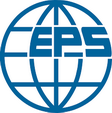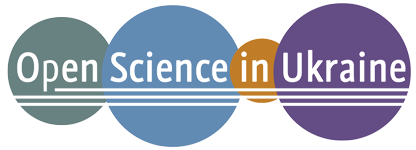Theoretical modelling of temperature changes during induction heating of magnetite suspensions
DOI:
https://doi.org/10.15330/pcss.23.3.536-541Keywords:
magnetite, magnetic hyperthermia, heating processes simulationAbstract
Although now it is customary to use magnetic hyperthermia in the treatment of oncological diseases as an auxiliary method, detailed modeling of the tissue heating process with parameters close to real ones will allow this method to be included in the main ones. Modelling of liquid heating with evenly distributed identical energy sources was presented. It allows choosing the optimal modes of using hyperthermia in real conditions. The model is based on experimental data and explains the dependence of the temperature of magnetite particles’ aqueous suspension versus the time. Newton's law equations were used for modelling of dependence of body temperature versus time at a constant temperature Tenv. It was hypothesized that the overheating problem could be avoided by using controlled concentrations of magnetite. The obtained results show that about 40 mg/cm3 of magnetite is required to avoid overheating.
References
L.A. Sivak, I. Smolanka, V.Е. Orel, A.V. Romanov, М.Yu. Klimаnоv, A. Loboda, S.I. Korovin, Magnetothermia of malignant tumors, Clinical oncology, 26(2), (2017).
W. Rao, Z.S. Deng, J. Liu, A Review of Hyperthermia Combined With Radiotherapy/Chemotherapy on Malignant Tumors, Crit. Rev. Biomed. Eng., 38, 101 (2010); https://doi.org/10.1615/CritRevBiomedEng.v38.i1.80
E.A. Périgo, G. Hemery, O. Sandre, D. Ortega, E. Garaio, F. Plazaola, F.J. Teran, Fundamentals and advances in magnetic hyperthermia, Applied Physics Reviews, 2, 041302 (2015); https://doi.org/10.1063/1.4935688
R. Samchenko, Thermosensitive composites of ferromagnetic nanoparticles for medical purposes (analysis of systems for research of thermal parameters), Measuring Equipment and Metrology, 72, 142 (2011).
R.B. Roemer, Engineering aspects of hyperthermia therapy, Ann. Rev. Biomed. Eng., 1, 347 (1999); https://doi.org/10.1146/annurev.bioeng.1.1.347
L. Roizin-Towle, J.P. Pirro, The response of human and rodent cells to hyperthermia, Int. J. Radiat. Oncol. Biol. Phys. 20(4), 751 1991; https://doi.org/10.1016/0360-3016(91)90018-y
C. Morris, R. Myers, and S.B. Field, The response of the rat tail to hyperthermia, The British Journal of Radiology 50(596), 576 (1977); https://doi.org/10.1259/0007-1285-50-596-576
S.N. Tabatabaei, J. Lapointe and S. Martel, Hydrogel encapsulated magnetic nanoparticles as hyperthermic actuators for microrobots designed to operate in the vascular network, 2009 IEEE/RSJ International Conference on Intelligent Robots and Systems, 546 (2009); https://doi.org/10.1109/IROS.2009.5354162 .
V. Kusigerski, E. Illes, J. Blanusa, S. Gyergyek, M. Boskovic, M. Perovic, V. Spasojevic, Magnetic properties and heating efficacy of magnesium doped magnetite nanoparticles obtained by co-precipitation method, J. Magn. Magn. Mater. 475, 470 (2018); https://doi.org/10.1016/j.jmmm.2018.11.127 .
A.B. Salunkhe, V.M. Khot, S.H. Pawar, Magnetic Hyperthermia with Magnetic Nanoparticles: A Status Review, Curr. Top. Med. Chem. 14, 572 (2014); https://doi.org/10.2174/1568026614666140118203550
P. Wust, B. Hildebrandt, G. Sreenivasa, et al., Hyperthermia in combined treatment of cancer, Lancet Oncol. 3, 487 (2002); https://doi.org/10.1016/S1470-2045(02)00818-5
J. Van der Zee, G.D. González, G.C. van Rhoon et al., Comparison of radiotherapy alone with radiotherapy plus hyperthermia in locally advanced pelvic tumours: a prospective, randomised, multicentre trial, Lancet, 355(9210), 1119 (2000); https://doi.org/10.1016/S0140-6736(00)02059-6
N.R. Datta, O.S. Gómez, U.S. Gaiplemail et al., Local hyperthermia combined with radiotherapy and-/or chemotherapy: Recent advances and promises for the future, Cancer Treat. Rev., 41(9), 742 (2015); https://doi.org/10.1016/j.ctrv.2015.05.009
B. Alberts, A. Johnson, J. Lewis, D. Morgan, M. Raff, K. Roberts, and P. Walter, Molecular Biology of the Cell 6th Edition, (Garland Science, New York, 2015)
N. Danyliuk, S. Lischynska, T. Tatarchuk, V. Kotsyubynsky, Magnetite nanoparticles synthesized using grape fruit extract: synthesis, morphology, hyperthermia application and catalytic activity in hydrogen peroxide decomposition, Physics and Сhemistry of Solid State, 23(1), 77 (2022); https://doi.org/10.15330/pcss.23.1.77-88
Y. Shlapa, M. Kulyk, V. Kalita, T. Polek, A. Tovstolytkin, J.-M. Greneche, S. Solopan and A. Belous, Iron-Doped (La,Sr)MnO3 Manganites as Promising Mediators of Self-Controlled Magnetic Nanohyperthermia, Nanoscale Research Letters 11, 24 (2016); https://doi.org/10.1186/s11671-015-1223-6
M.R. Cornell and U. Schwertmann The Iron Oxides: Structure Properties Reactions Occurences and Uses 2nd Completely Revised and Extended Edn (Wiley, New York, 2003).









